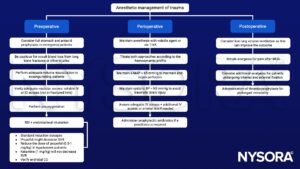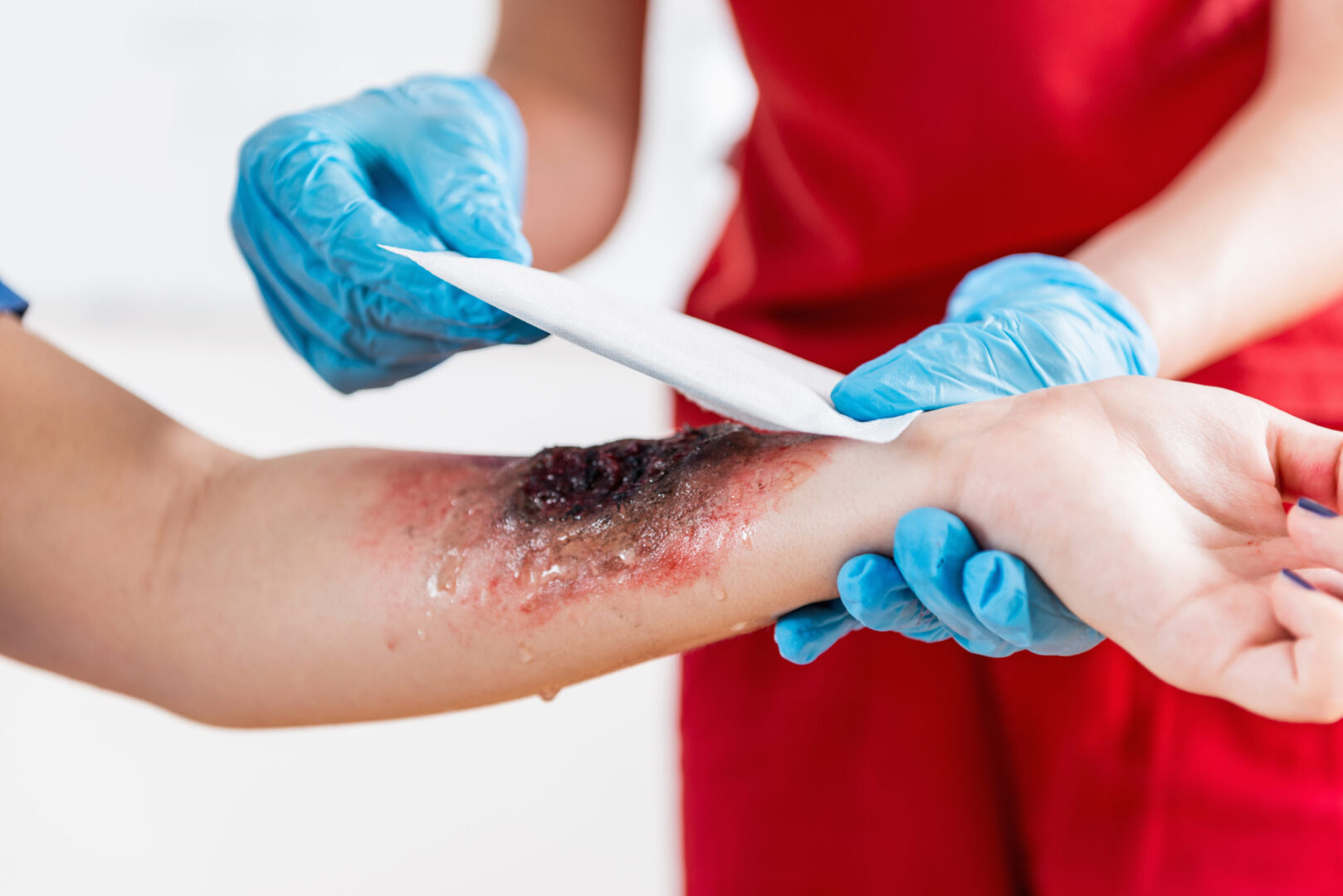Learning objectives
- Assessment of the injury severity score of trauma
- Immediate treatment of trauma
- Anesthetic management of trauma
Definition and mechanisms
- Defined as a body wound resulting from a sudden physical injury from impact, violence, or accident
- Minor, serious, life-threatening, or potentially life-threatening injuries
- Blunt or penetrating wound
- The severity of trauma is classified according to the injury type, the physical location of the injury, and how many injuries there are
- Immediately life-threatening injuries:
- Airway obstruction
- Tension pneumothorax
- Open pneumothorax
- Cardiac tamponade
- Massive hemothorax
- Flail chest
- Delayed/hidden injuries:
- Thoracic aortic disruption
- Tracheobronchial disruption
- Myocardial contusion
- Traumatic diaphragmatic tear
- Esophageal disruption
- Pulmonary contusion
Complications
- Hemorrhage
- Infection
- Sepsis
- Multi-organ failure
Injury severity score
- Individual body regions are assigned an abbreviated injury scale (AIS) score
- The three most severely injured body regions then have their score squared and added together to produce the AIS score
| Abbreviated injury scale | Injury |
|---|---|
| 1 | Minor |
| 2 | Moderate |
| 3 | Serious |
| 4 | Severe |
| 5 | Critical |
| 6 | Unsurvivable |
Immediate treatment
- Cardiovascular reuscitation
- Cervical collars:
- May increase secondary neurological injury, intracranial pressure
- May worsen intubation conditions
- Secure the airway
- Proactive early treatment to counter the ‘lethal triad’ of acidosis, hypothermia, and coagulopathy
- Warm the OR
- Warmed IV line
- Rapid infuser with warming capability
- Permissive hypotension and establishment of a massive transfusion protocol
- Early treatment of anticipated coagulopathy with blood products
- Other injuries, considerable pain, or distal ischemia may complicate the management
Anesthetic management
- Fracture reduction requires general or regional anesthesia
- Proximal fracture reduction or joint relocation performed under GA may require a small dose of a neuromuscular blocker to facilitate manipulation
- Manipulation under anesthesia (MUA)
- Relocation of dislocated joints
- Correct fracture deformity
- Improve mobility of fixed joints
- Improve mobility after arthroplasty:
- Internal fixation
- Distal long bone fracture plating
- Intramedullary nailing procedures
- External fixation

Suggested reading
- Pollard BJ, Kitchen, G. Handbook of Clinical Anaesthesia. Fourth Edition. CRC Press. 2018. 978-1-4987-6289-2.
- Tobin JM, Barras WP, Bree S, et al. Anesthesia for Trauma Patients. Mil Med. 2018;183(suppl_2):32-35.
- Uday Jain, Maureen McCunn, Charles E. Smith, Jean-Francois Pittet; Management of the Traumatized Airway. Anesthesiology 2016; 124:199–206.
We would love to hear from you. If you should detect any errors, email us customerservice@nysora.com








